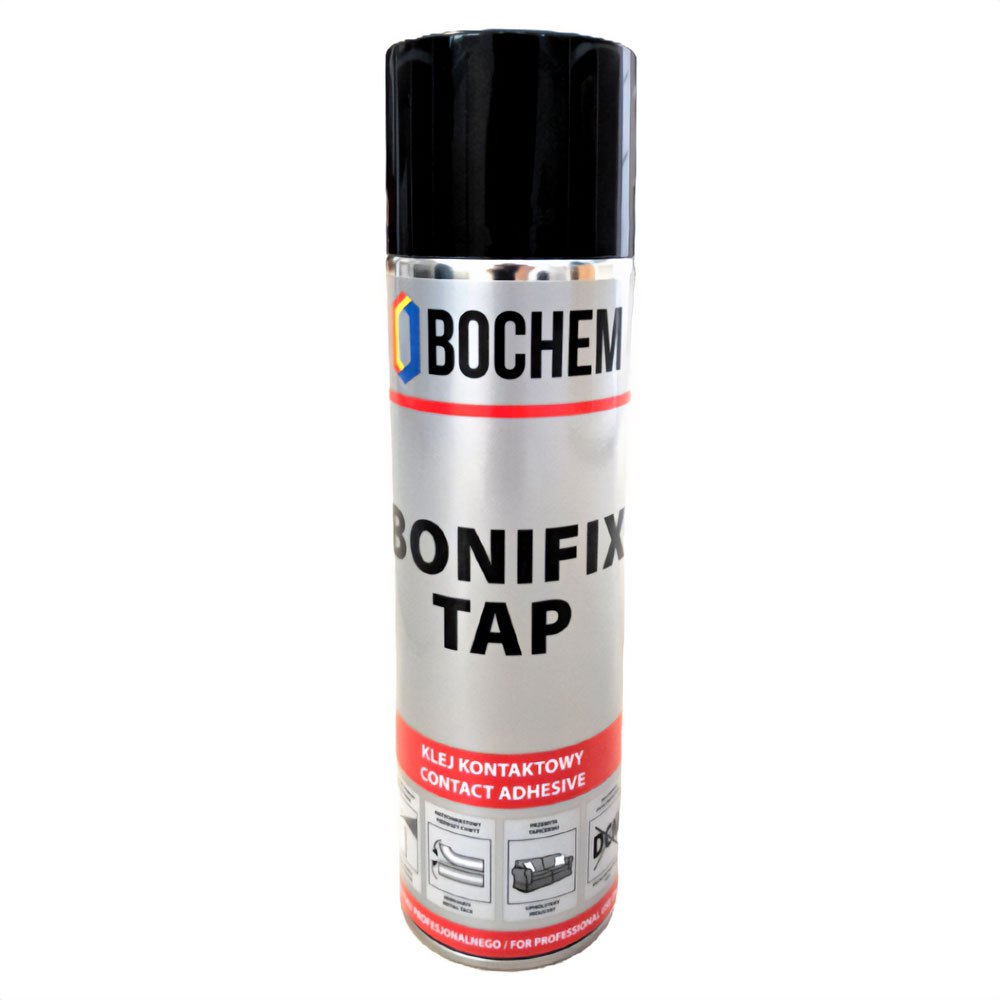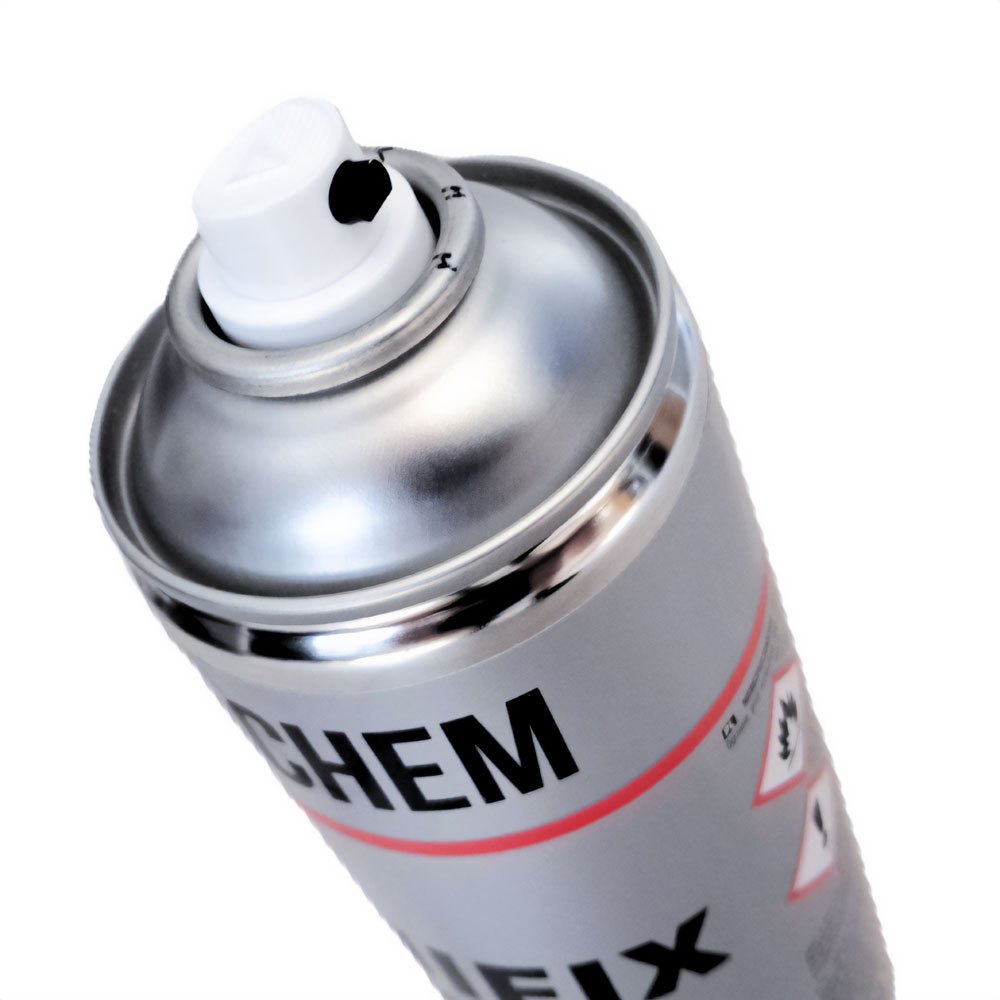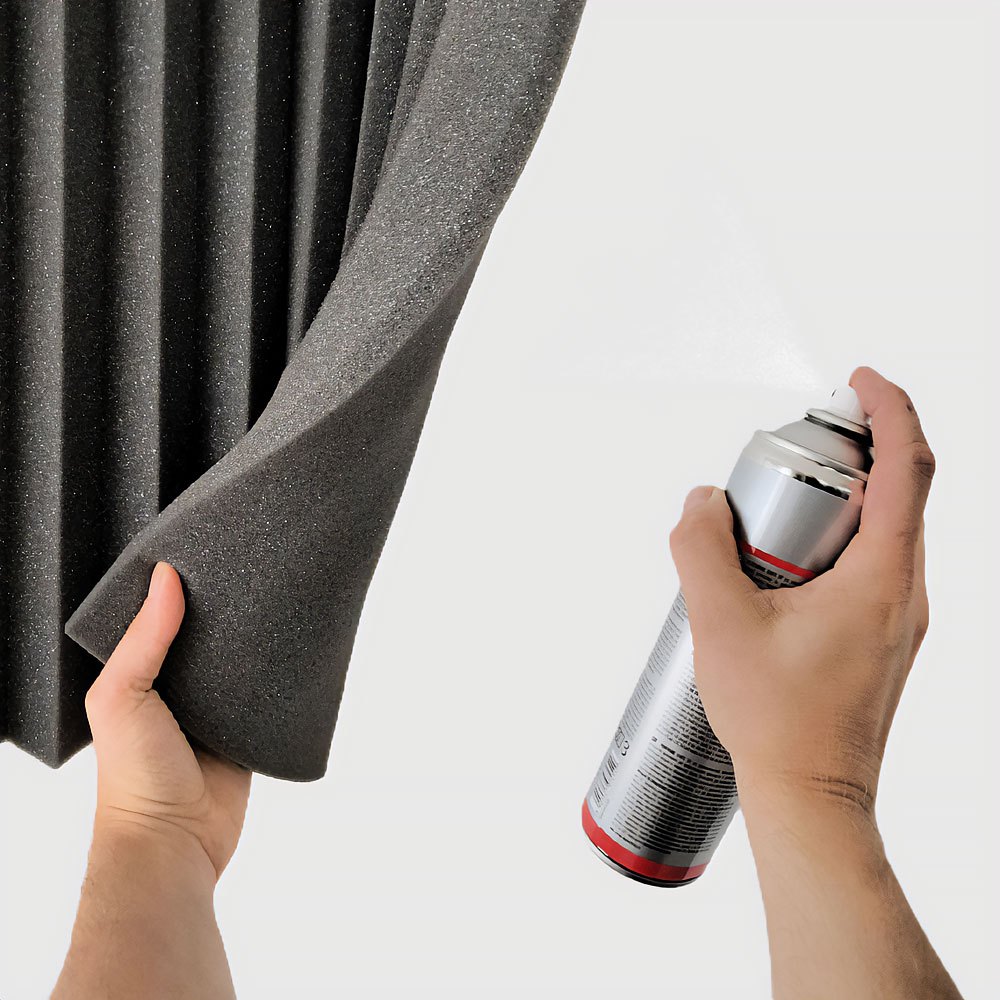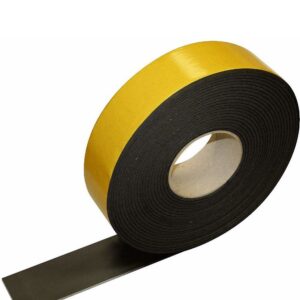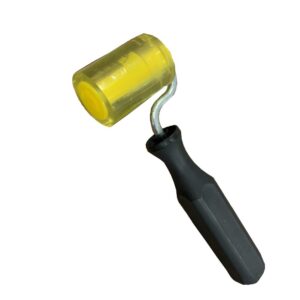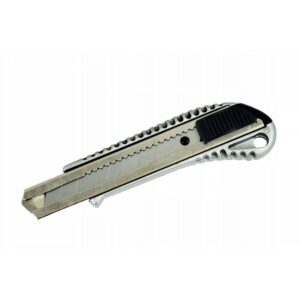Upholstery Contact Adhesive Bonifix Tap Aerosol 500ml Bochem
Upholstery contact adhesive in aerosol form represents an advanced solution for the upholstery and finishing industry. The single-component solvent-based formula provides immediate readiness for use right after opening the package. The adjustable dispenser allows precise control of spray width and intensity, tailoring the application to specific task requirements. The product features high bonding strength and a short drying time, significantly speeding up the work process.
The safe formula free of dichloromethane is a key advantage for users and the environment. Its versatile applications cover a wide range of materials—from traditional upholstery foams to modern acoustic panels. The product demonstrates excellent adhesion to various substrates, including wood, composite boards, concrete, and plastics. The aerosol form ensures even distribution of the adhesive on surfaces, eliminating unevenness and clumps.
The product’s professional quality is confirmed by its use in both industrial and craft applications. Its cost-effectiveness comes from its high efficiency: a single package covers an area of approximately 8-10 square meters. The speed of application and the reliability of bonds make this adhesive suitable for both mass production and precise repair work. Its temperature stability allows operation under various environmental conditions.

Technical Data
The technical specifications of the contact adhesive include key parameters affecting application efficiency. The 500 ml capacity combined with a weight of about 450 grams provides optimal proportions for convenient use. Package dimensions—height 245 mm and diameter 65 mm—allow for a stable grip during work.
| Parameter | Value |
|---|---|
| Capacity | 500 ml |
| Net weight | approximately 450 g |
| Package height | 245 mm |
| Diameter | 65 mm |
| Type of adhesive | single-component contact |
| Base | solvent-based |
| Operating temperature | minimum 15°C |
| Open time | 2-5 minutes |
| Full strength | 24 hours |
| Spray distance | 10-20 cm |
| Coverage area | 8-10 m² |
| Dichloromethane content | none |
The minimum temperature of 15°C defines the optimal application conditions for maximum effectiveness. The open time of 2 to 5 minutes allows precise positioning of elements before final bonding. The spray distance between 10 and 20 centimeters ensures even surface coverage without material splattering.
Full bond strength is achieved within 24 hours after application, although initial tack occurs much sooner. Coverage efficiency of 8-10 square meters per single package makes the product an economical solution for medium and large projects.
Application
The versatility of contact adhesive applications makes it suitable for numerous industrial and craft fields. The upholstery industry is a primary area of use, covering both the production of new furniture and the renovation of older furnishings. The installation of acoustic foams in recording studios and conference rooms requires a reliable adhesive that ensures durable attachment of sound-absorbing materials.
Areas of contact adhesive application:
- Furniture upholstery – bonding foams to chair and sofa frames
- Mattresses and cushions – joining layers of polyurethane foam
- Acoustic panels – installation in studios and cinemas
- Floor coverings – securing rubber and felt mats
- Automotive industry – upholstery for seats and door panels
- Thermal insulation – foam application in construction
- Technical felt – bonding in machinery industry
- Ecopelle and synthetic leathers – production of leather goods
- Coconut mats – natural filler in eco-friendly furniture
- Decorative fabrics – application in interior design sector
Specialized applications include the installation of soundproofing systems in commercial and residential spaces. The ease of aerosol application eliminates the need for additional tools, speeding up work processes. The precise dispenser allows economical use of material while maintaining high-quality bonds.
Features and Benefits
The innovative contact adhesive formula free from dichloromethane represents a breakthrough in occupational safety. Traditional upholstery adhesives often contain harmful substances that can negatively affect users’ health as well as indoor air quality in workspaces. Eliminating dichloromethane from the composition significantly reduces the risk of allergic reactions and respiratory problems among upholstery industry workers.
User ergonomics is another important advantage of the product. The aerosol form eliminates the need to prepare glue, mix components, or use additional application tools. The adjustable dispenser allows stream adjustment to meet specific task requirements—from precise detail work to covering large surfaces. Application speed directly translates into increased productivity and reduced labor costs.
Key product advantages:
- No dichloromethane – safe formula for users and the environment
- Immediate readiness – one-component adhesive ready to use
- Adjustable spray – precise application control
- Strong bonding – durable connections after a short time
- Fast drying – efficient work without long waiting
- Versatility – adhesion to various materials
- Economical – high efficiency on large surfaces
- Professional quality – reliability in industrial applications
- Easy storage – stable aerosol form
- Precise application – minimizing material waste
The durability of bonds achieved by contact adhesive often exceeds the lifespan of the bonded materials themselves. Resistance to external factors—including temperature fluctuations and air humidity—guarantees structural stability for many years of use. The flexibility of the cured adhesive allows natural movements of upholstery materials without cracking or bond detachment.
User and environmental safety
Safety aspects when working with industrial adhesives are crucial in terms of protecting workers’ health and minimizing environmental impact. The elimination of dichloromethane from the contact adhesive formula is a significant step toward improving working conditions in the upholstery industry. Dichloromethane—also known as methylene chloride—belongs to a group of volatile organic compounds that can cause health problems with prolonged exposure.
The modern formula based on safe solvents provides identical bonding effectiveness with significantly reduced risk for users. Room ventilation is still recommended during application, but safety requirements are much lower than with traditional adhesives. The absence of strong odors and limited vapor emissions make working with the product more comfortable for upholsterers and production workers.
The environmental benefits resulting from the new formula include reduced emissions of volatile organic compounds into the atmosphere. The biodegradation process of active ingredients proceeds faster than with adhesives containing chlorinated compounds. The aerosol packaging allows full use of the contents, minimizing waste generated during upholstery work.
Application techniques and best practices
Surface preparation is a fundamental element ensuring maximum bonding effectiveness. Cleaning bonded materials from dust, grease, and residues of other substances increases bonding strength by a significant percentage. Porous surfaces—such as upholstery foams—require gentle cleaning without damaging the material structure. Smooth substrates—including leather and plastics—may require light sanding to improve adhesion.
Ambient temperature directly affects the quality of application and the curing speed of contact adhesive. Optimal conditions include a temperature between 18 and 25 degrees Celsius with relative humidity not exceeding 65 percent. Low temperatures slow down the drying process and may reduce the strength of the final bond. High temperatures accelerate reactions but can lead to premature curing of the adhesive on the applicator surface.
The spraying technique requires maintaining a constant distance between the dispenser and the bonded surface. A distance of 15 centimeters ensures optimal coverage with minimal material splatter. Even movements in a horizontal or vertical direction guarantee a uniform layer of adhesive across the entire surface. Applying in several thin layers proves more effective than one thick application, especially on large bonding surfaces.

